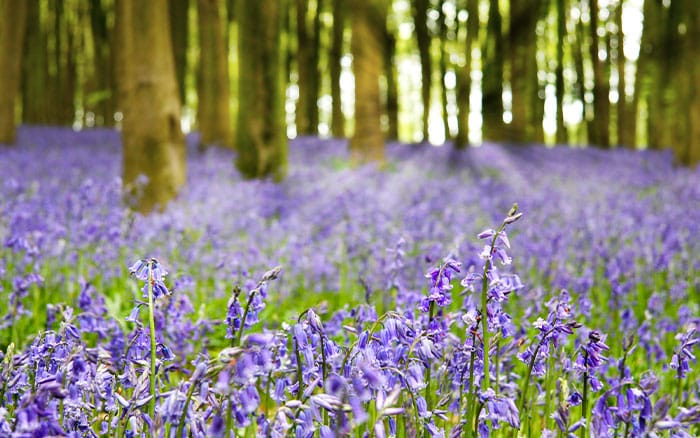Get the magical feeling of freedom in your very own woodland garden, the perfect place to unwind. You don’t need a forest in your back garden to create the feeling of a woodland.
What is a woodland garden?
Woodland gardens make the most of large trees and wooded areas with large shrubs to create a relaxed and natural look.
By mixing native plants, ground cover and design elements such as winding pathways, you can have an enchanting space in your own garden.

Get the woodland look

Go for walks through wooded areas to get inspiration. Look at the trees and how they form canopies overhead. Look at the native plants that grow beneath the large trees and shrubs.
Trees such as Betula pendula (silver birch), Sorbus aucuparia (rowan), Malus sylvestris (crab apple) and Corylus avellana (hazel) will add structure to the garden. Their height will provide form in the garden, as well as shelter in the garden. The foliage, fruits and flowers of the different trees are excellent sources of food and shelter for wildlife too.
Large trees give a sense of enclosure and protection, adding to the privacy of your garden as well as feeling like your garden is a sanctuary.
If you have trees in your garden already, utilise these to achieve the woodland look. Alternatively, if you’re starting from scratch, buy semi-mature trees that will add the woodland effect instantly.
A really effective technique with trees in woodland gardens is to remove the lower branches of trees and large shrubs. This allows light to burst through the canopy, and shine light on the plants underneath that thrive in the partial sunlight.
Mix and match
Use ferns such as Asplenium scolopendrium (hart’s tongue fern), Polypodium vulgare (common polypody) and Asplenium trichomanes (maidenhair spleenwort) to form layers of soft green foliage. Evergreen ferns are fantastic for bringing colour and interest all year round, with their gentle foliage that helps to relax and soothe your mind.
Complement the ferns with woodland wildflowers that will burst to life, giving the sense of a bright, vibrant meadow. Start with the iconic bluebells with their nodding flowers that are a sure sign of spring. Similarly, foxgloves are a classic contender with the tall spires of flowers that bloom from June to September.

The scrambling dog rose is a lovely plant that attached to other shrubs to grow. The pink flowers bloom from May to August, bringing with them a faint, sweet smell.
Convallaria majalis (lily-of-the-valley) is a sweetly perfumed pick that thrives on woodland floors. The white flowers grow on spikes that droop to one side in spring into summer. These flowers have been associated with folklore and tales of fairies, as well as being a popular flower to have in bridal bouquets.
Winding woodland

Plant bulbs randomly or in drifts, rather than in uniform lines. Then, in spring, there will be a spectacle of colour. Having this relaxed approach will mean the garden looks natural and more relaxed rather than organised.
For a full tranquil feel, create a pathway that meanders through your space. The gentle curves that lead out of sight add mystery and intrigue to the garden. Surround the path will pretty, perfumed plants to accompany you on your journey.
Upkeep and care
By choosing plants that suit the space they’re in, you will be decreasing the amount of maintenance they need.
For example, under trees choose shady plants that will thrive in dapped shade such as hostas and ferns.

Finishing touch

Embellish the space with ornaments or props that emphasise the woodland feel.
If you have children, let them design a fairy wonderland in an old wheelbarrow that can be nestled amongst your plants.

Leave A Comment